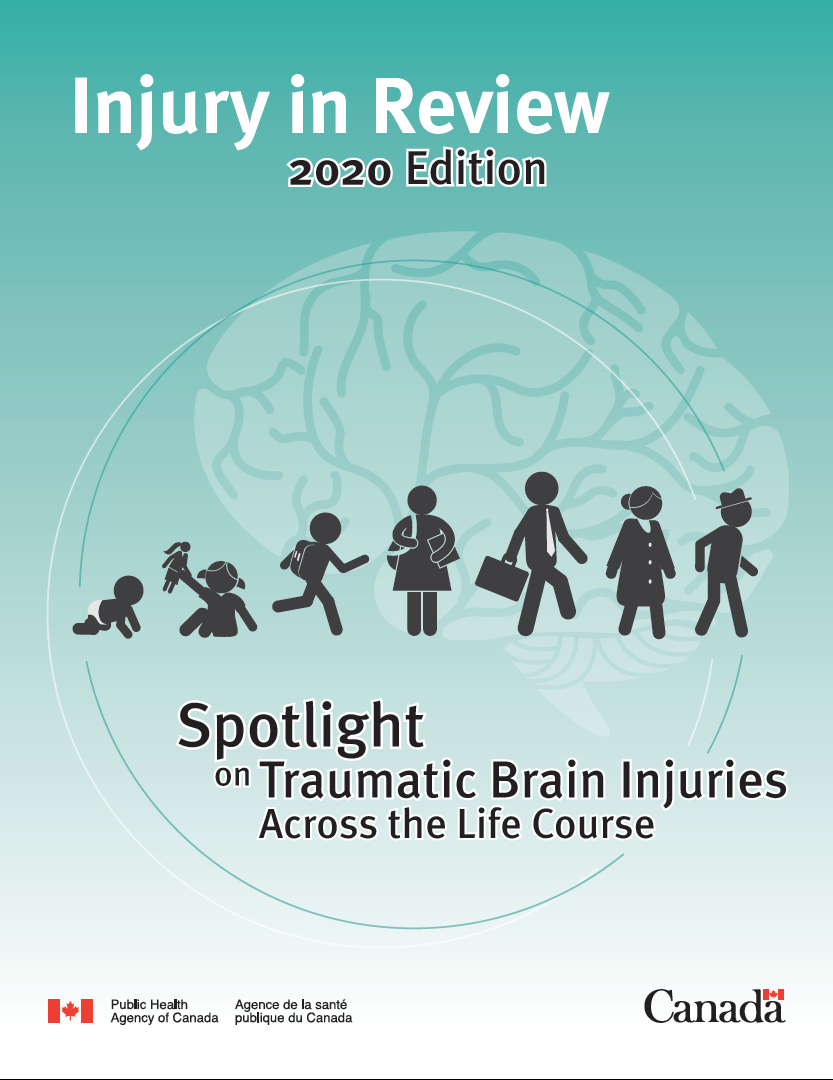Data Blog
You’re reading our Data Blogs, a great way of getting quick facts, and the latest data, on different public health topics.
Injury in Review, 2020 Edition: Spotlight on Traumatic Brain Injuries Across the Life Course Published: ()

This is the third report of the Public Health Agency of Canada’s (PHAC) Injury in Review series, providing national surveillance statistics on head injuries and traumatic brain injuries (TBI).
The following data sources are used:
- Canadian Vital Statistics: Deaths Database of Statistics Canada, for reporting deaths
- Hospital Morbidity Database and Discharge Abstract Database of the Canadian Institute for Health Information (CIHI), for reporting hospitalizations
- National Ambulatory Care Reporting System of CIHI, for reporting emergency department (ED) visits;
- Electronic Canadian Hospitals Injury Reporting and Prevention Program database (eCHIRPP) of PHAC, for reporting sentinel surveillance of ED visits
Findings specific to the eCHIRPP database cover the following topics related to head injuries and TBI:
- Trends in TBI, 1990 to 2018
- Comparisons of the five most common sports and recreational activities
- Male organized ice hockey
- Female organized ice hockey
- Female organized rugby
- Bleachers and grandstands
- Television tip-overs
- Strollers
- School
- Falls among seniors
- Motor vehicle pedestrian collisions
- Intentional injuries (self-harm and assault)

Highlights
Deaths- Between 2002 and 2016 there were approximately 235,471 injury deaths and of those 53,200 (22.6%) were associated with a TBI diagnosis. TBI mortality rates were highest for the oldest Canadians rising sharply among those 65 years of age and older.
- Between 2002 and 2016, trends for males decreased slightly while female rates slightly increased. Some of the leading causes of TBI deaths were transportation collisions, falls among the elderly and suicide among males.
- Between 2006/07 and 2017/18 there were 399,376 hospitalizations for head injuries, 63% (251,504) of which involved males. Over this period head injury trends for females showed a slight increase and for males a slight decrease. The leading cause of hospitalization for head injury was falls.
- Between 2002/03 and 2017/18 there were 5,074,239 ED visits for head injuries in Ontario and Alberta combined. For both males and females, TBI ED visits have been increasing since 2009/10. Falls and sports and recreation incidents are the leading causes of ED visits for TBI.
- Sentinel surveillance of TBI show similar patterns to those reported from other sources.
- An increasing trend in TBI for both males and females was observed over the period from 1990 to 2018.

This report shows several situations where head injuries and TBI have declined over time and these declines have been linked to prevention initiatives. However, injury rates are still high and head injuries and TBI continue to be an important public health issue. As long as frequent and serious head injuries and TBI persist, the need for effective injury surveillance in support of prevention remains. Results from this report may be used to generate hypotheses for other studies, to highlight gaps in TBI/concussion surveillance and to help improve research and surveillance moving forward.
Please visit the bilingual Injury in Review, 2020 Edition: Spotlight on Traumatic Brain Injuries Across the Life Course on Canada.ca.